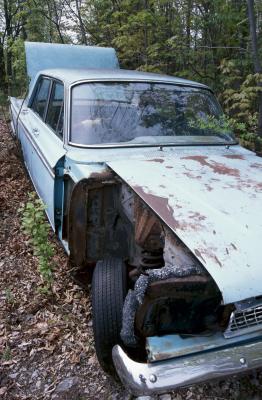
Here's a good way to mess with your friends the next time you're sitting at the local watering hole: ask them if cars are alive. Cars these days are composed of both synthetic and biological materials, they can react to outside stimuli such as heat and cold, they can reproduce (with the aid of a human symbiote) and they can even age. Resurrecting a long-stationary engine usually isn't a matter of simply turning the key; it's more like waking an old lady from a very long nap.
The biggest problem with restarting an old engine has to do with oiling. Oil, and its nefarious cousin, sludge, are supposed to coat every interior surface of your engine to keep everything slick and working properly. Over time, liquid oil either drains down into the pan or gets trapped somewhere in the engine, and sludge dries into charcoal. Obviously, lubricating an engine with air, rust and charcoal isn't the smartest thing you can do where longevity is concerned.
You might be surprised as to exactly how much stuff can get into an engine when it sits for a while, especially if there's no air filter on it. Thoroughly inspect your air intake tube for leaves and critters, and pull the carburetor or throttle body off to inspect the inside of the intake. Trust it: Your engine will not be happy if the intake valves happen to suck a bird's nest, field mouse or snake into the combustion chambers. Don't assume everything's kosher if the air filter's in place, either; bugs can crawl up through the tailpipe, through open exhaust valves and nest in the cylinders or intake manifold.
As mentioned in Section 1, oil will eventually drain out of everywhere it's supposed to be, including the oil pump. The prescribed solution is to manually prime the oil pump using a drill and a specialized pump-priming shaft. This may not be possible for some engines, though; the worst case scenario is that you'll have to pull the oil pump, pack it with petroleum jelly and reinstall it. The jelly will allow the pump to create a vacuum and pull oil from the pan. You might get lucky, though. Try installing a mechanic's oil pressure gauge and bump the starter; it might produce oil pressure without priming.
Once you've primed the pump and have established oil pressure with a priming shaft, disconnect the ignition system -- if it's still connected -- and bump the starter a few times to ensure that oil goes everywhere it should. Spin the engine over a few times to blow anything in the engine out of it, and listen for unexpected sounds from the engine. Stop if you hear any kind of rattling, puffing or any other sound the engine doesn't normally make. Reconnect the ignition and give it a shot. If the engine doesn't start right away, then it's probably due to a lack of fuel pressure. If you have a mechanical pump, just keep cranking the engine for about 20 seconds or until it catches.